A Passive and Wireless Sensor for Bone Plate Strain Monitoring
Abstract
:1. Introduction
2. Materials and Methods
3. Experiments
3.1. The Tibia-Bone Plate–Screw Model
3.2. Finite Element Model Construction
3.3. Experiment Preparation
3.4. Experimental Setup
4. Results and Discussion
4.1. Analysis Results of the FEA Model
4.2. Experimental Results of the TBS Prototype
4.3. Discussion
5. Conclusions
Acknowledgments
Author Contributions
Conflicts of Interest
References
- Snow, M.; Thompson, G.; Turner, P.G. A mechanical comparison of the locking compression plate (LCP) and the low contact-dynamic compression plate (DCP) in an osteoporotic bone model. J. Orthop. Trauma 2008, 22, 121–125. [Google Scholar] [CrossRef] [PubMed]
- Ricci, W.M.; Loftus, T.; Cox, C. Locked plates combined with minimally invasive insertion technique for the treatment of periprosthetic supracondylar femur fractures above a total knee arthroplasty. J. Orthop. Trauma 2006, 20, 190–196. [Google Scholar] [CrossRef] [PubMed]
- Herford, A.S.; Ellis, E. Use of a locking reconstruction bone plate/screw system for mandibular surgery. J. Oral Maxillofac. Surg. 1998, 56, 1261–1265. [Google Scholar] [CrossRef]
- Korner, J.; Lill, H.; Müller, L.P. Distal humerus fractures in elderly patients: Results after open reduction and internal fixation. Osteoporos. Int. 2005, 16, 73–79. [Google Scholar] [CrossRef] [PubMed]
- Jakob, M.; Rikli, D.A.; Regazzoni, P. Fractures of the distal radius treated by internal fixation and early function. Bone Jt. J. 2000, 82, 340–344. [Google Scholar] [CrossRef]
- Maehara, T.; Moritani, S.; Ikuma, H. Difficulties in removal of the titanium locking plate in Japan. Injury 2013, 44, 1122–1126. [Google Scholar] [CrossRef] [PubMed]
- Bae, J.H.; Oh, J.K.; Oh, C.W. Technical difficulties of removal of locking screw after locking compression plating. Arch. Orthop. Trauma Surg. 2009, 129, 91–95. [Google Scholar] [CrossRef] [PubMed]
- Holmes, H.; Tan, E.L.; Ong, K.G. Real-time, in vivo investigation of mechanical stimulus on cells with remotely activated, vibrational magnetoelastic layers. In Proceedings of the 2011 Annual International Conference of the IEEE Engineering in Medicine and Biology Society (EMBC), Boston, MA, USA, 30 August–3 September 2011; pp. 3979–3982. [Google Scholar]
- Tan, E.L.; Pereles, B.D.; Horton, B. Implantable biosensors for real-time strain and pressure monitoring. Sensors 2008, 8, 6396–6406. [Google Scholar] [CrossRef] [PubMed]
- Zeng, K.; Grimes, C.A. Wireless magnetoelastic physical, chemical, and biological sensors. IEEE Trans. Magn. 2007, 43, 2358–2363. [Google Scholar] [CrossRef]
- Wun-Fogle, M.; Savage, H.T.; Clark, A.E. Sensitive, wide frequency range magnetostrictive strain gage. Sens. Actuators 1987, 12, 323–331. [Google Scholar] [CrossRef]
- Lanotte, L. Tensile stress effect on magnetic properties of cw-laser annealed amorphous Fe40Ni38Mo4B18 ribbons. J. Phys. Lett. 1983, 44, 541–546. [Google Scholar] [CrossRef]
- Grimes, C.A.; Mungle, C.S.; Zeng, K. Wireless magnetoelastic resonance sensors: A critical review. Sensors 2002, 2, 294–313. [Google Scholar] [CrossRef]
- Ong, K.G.; Paulose, M.; Grimes, C.A. A wireless, passive, magnetically-soft harmonic sensor for monitoring sodium hypochlorite concentrations in water. Sensors 2003, 3, 11–18. [Google Scholar] [CrossRef]
- Crescini, D.; Sardini, E.; Serpelloni, M. An autonomous sensor for force measurements in human knee implants. Procedia Chem. 2009, 1, 718–721. [Google Scholar] [CrossRef]
- Green, S.R.; Gianchandani, Y.B. Wireless magnetoelastic monitoring of biliary stents. J. Microelectromech. Syst. 2009, 18, 64–78. [Google Scholar] [CrossRef]
- Schmidt, A.H.; Finkemeier, C.G.; Tornetta, P., III. Treatment of closed tibial fractures. J. Bone Jt. Surg. 2003, 85, 352–368. [Google Scholar] [CrossRef]
- Shadgan, B.; Pereira, G.; Menon, M. Risk factors for acute compartment syndrome of the leg associated with tibial diaphyseal fractures in adults. J. Orthop. Traumatol. 2015, 16, 185–192. [Google Scholar] [CrossRef] [PubMed]
- Foote, C.J.; Guyatt, G.H.; Vignesh, K.N. Which surgical treatment for open tibial shaft fractures results in the fewest reoperations? A network meta-analysis. Clin. Orthop. Relat. Res. 2015, 473, 2179–2192. [Google Scholar] [CrossRef] [PubMed]
- Mehboob, H.; Kim, J.; Mehboob, A. How post-operative rehabilitation exercises influence the healing process of radial bone shaft fractures fixed by a composite bone plate. Compos. Struct. 2017, 159, 307–315. [Google Scholar] [CrossRef]
- Brekelmans, W.A.M.; Poort, H.W.; Slooff, T. A new method to analyse the mechanical behaviour of skeletal parts. Acta Orthop. Scand. 1972, 43, 301–317. [Google Scholar] [CrossRef] [PubMed]
- Rybicki, E.F.; Simonen, F.A.; Weis, E.B. On the mathematical analysis of stress in the human femur. J. Biomech. 1972, 5, 203–215. [Google Scholar] [CrossRef]
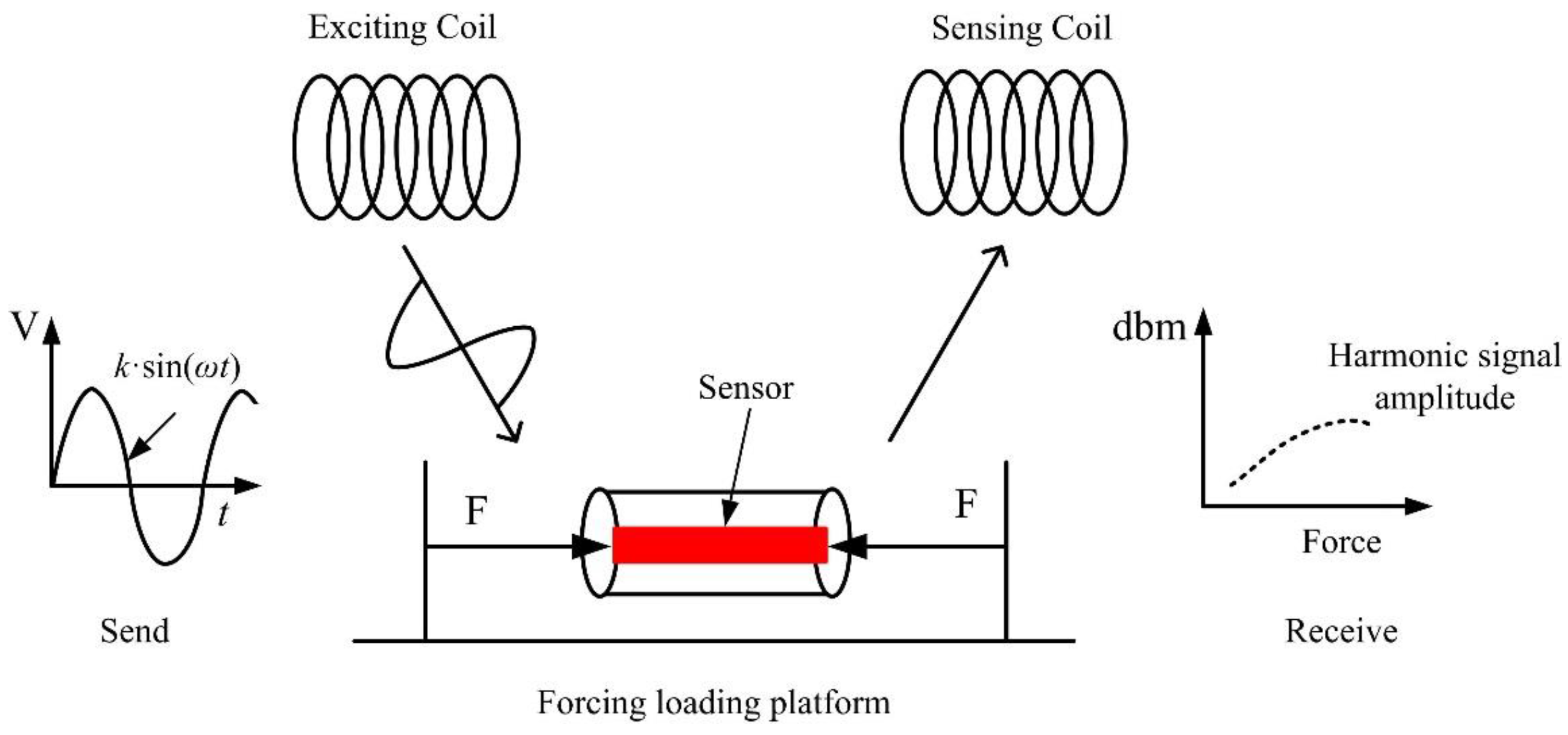
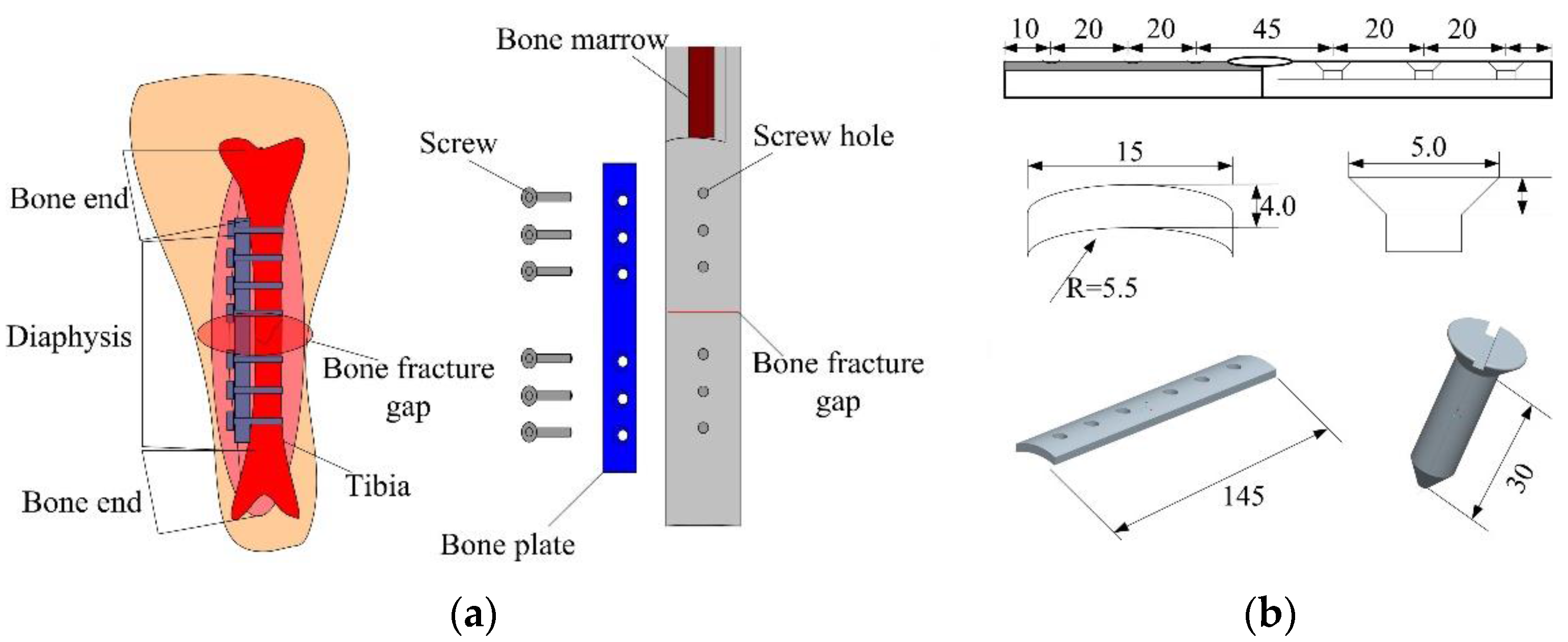
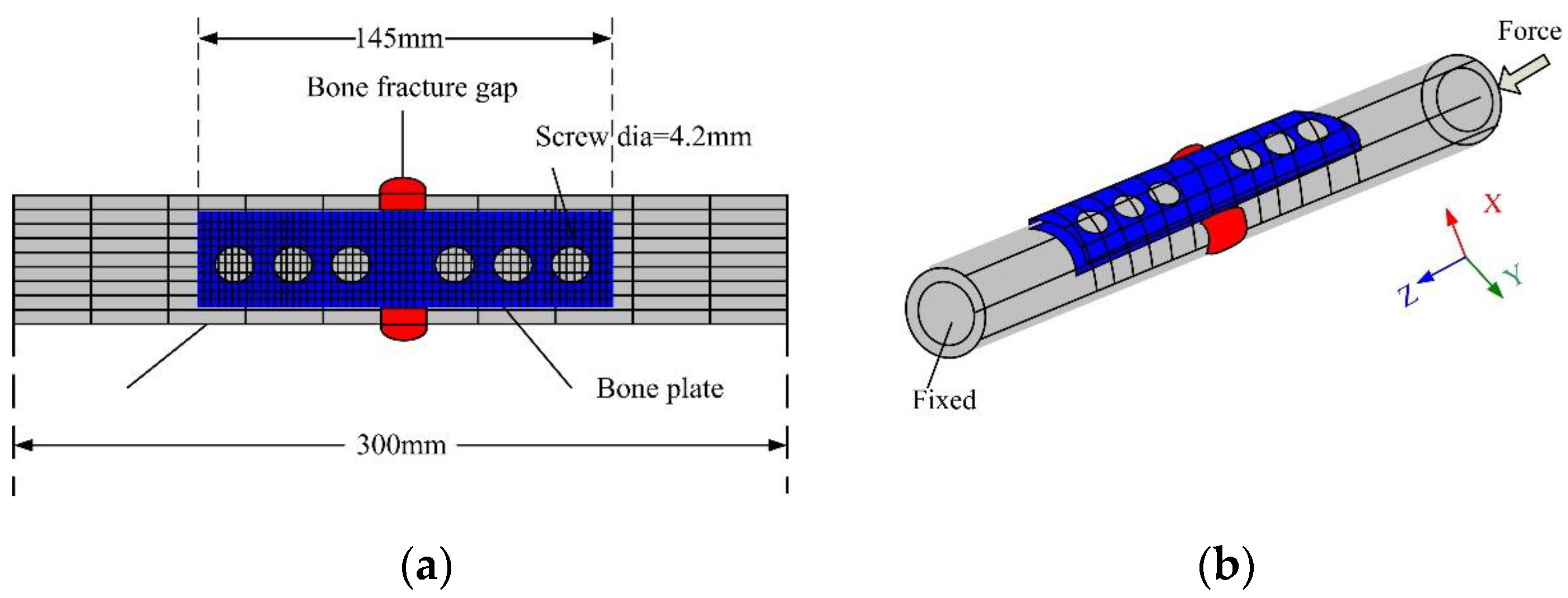


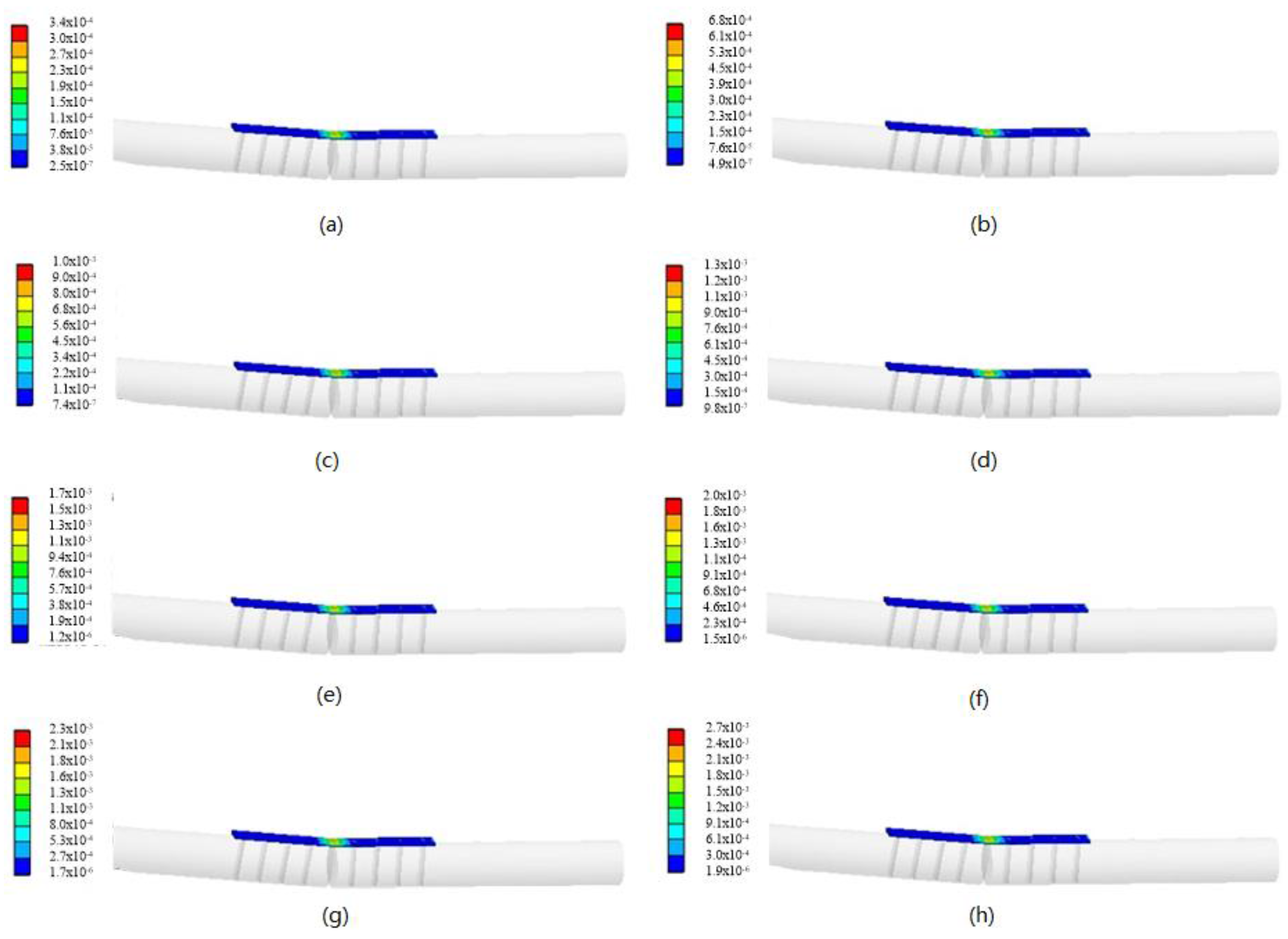
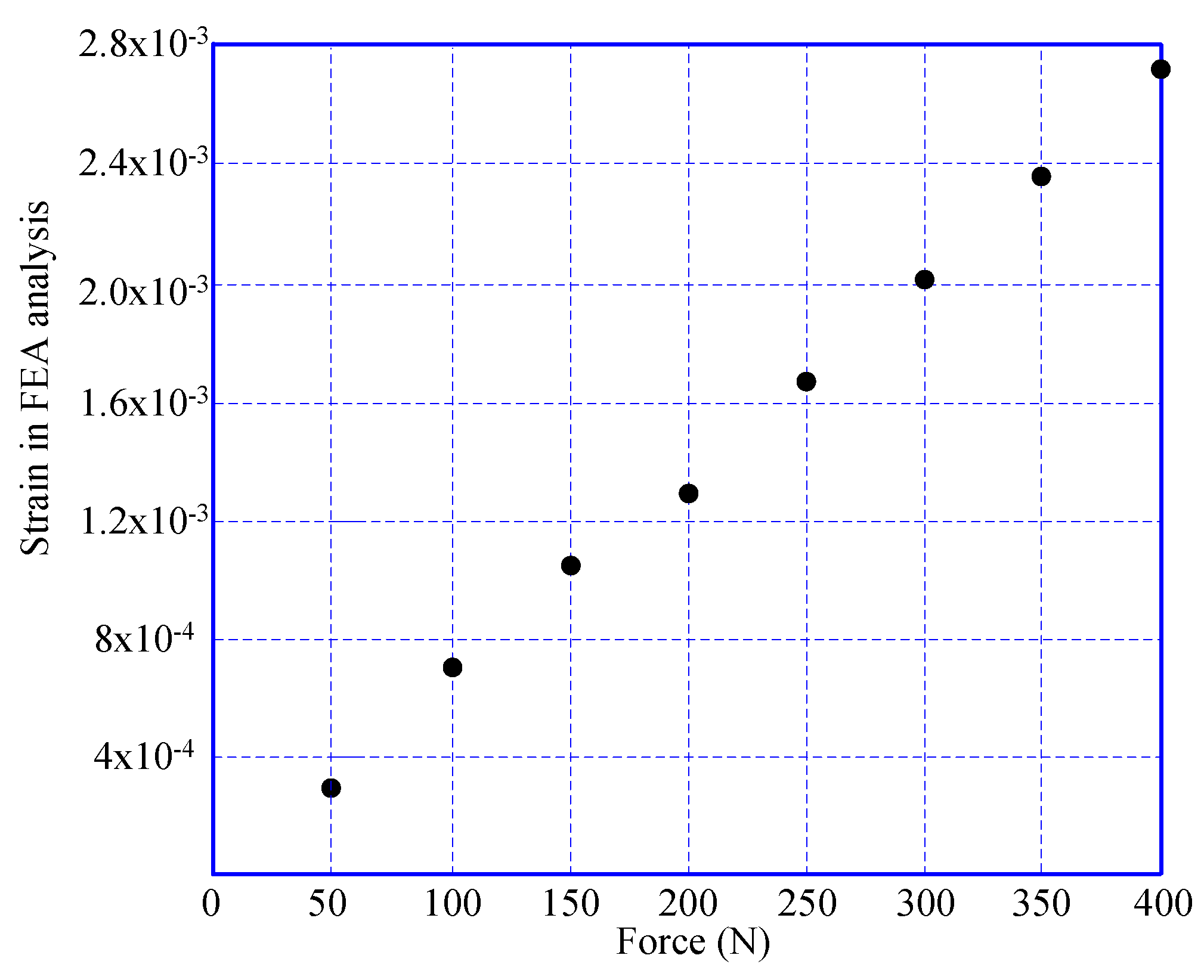

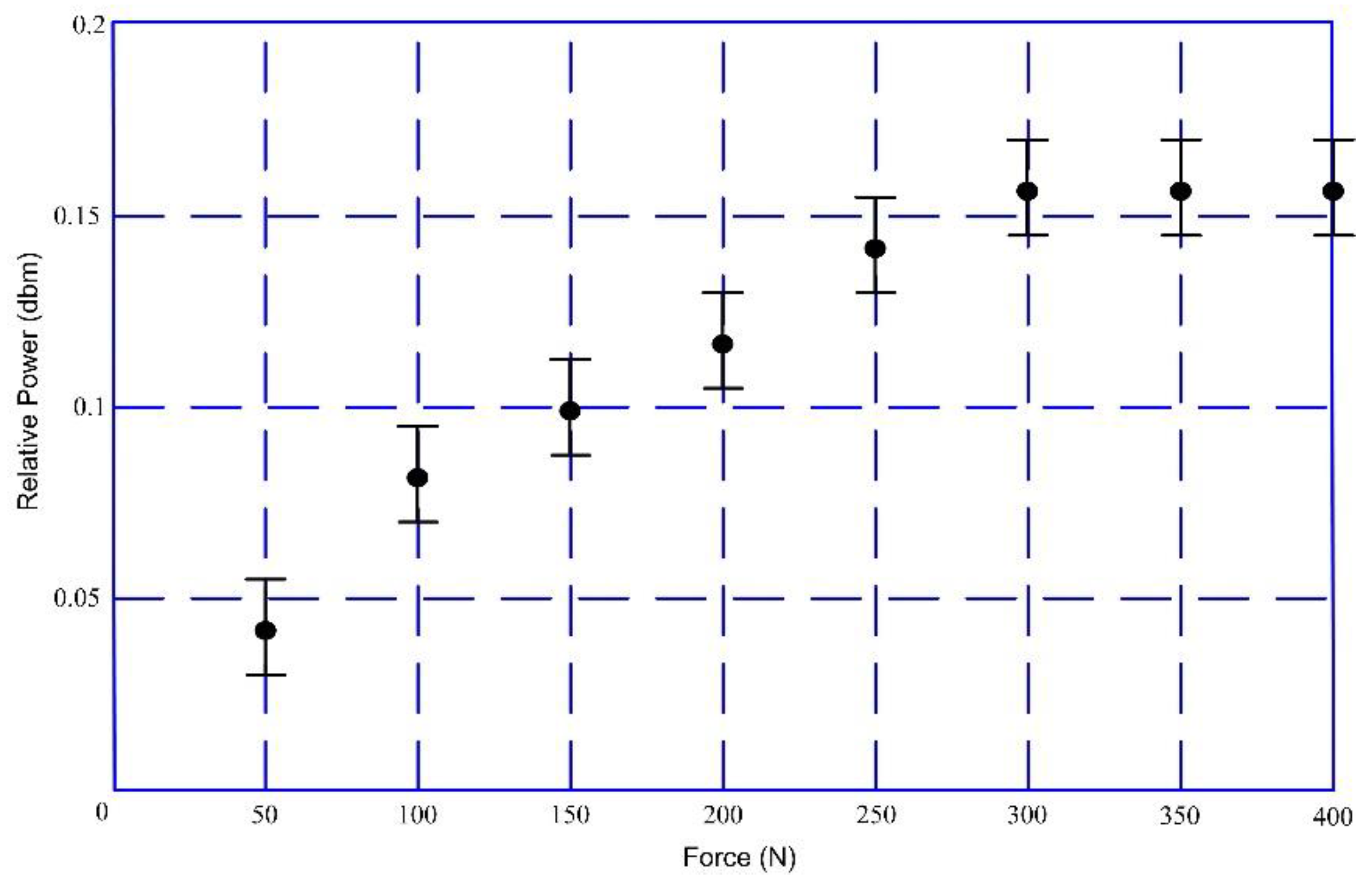

| FEA Model | Elements/Odes | Material Properties | ||
|---|---|---|---|---|
| Young’s Modulus (GPa) Tensile Strength (GPa) Poisson’s Ratio | ||||
| Tibia | 7475/13,216 | 14 | 0.117 | 0.488 |
| Bone plate | 5309/9750 | 193 | 0.52 | 0.31 |
| Screw | 2101/3630 | 193 | 0.52 | 0.31 |
© 2017 by the authors. Licensee MDPI, Basel, Switzerland. This article is an open access article distributed under the terms and conditions of the Creative Commons Attribution (CC BY) license (http://creativecommons.org/licenses/by/4.0/).
Share and Cite
Tan, Y.; Hu, J.; Ren, L.; Zhu, J.; Yang, J.; Liu, D. A Passive and Wireless Sensor for Bone Plate Strain Monitoring. Sensors 2017, 17, 2635. https://doi.org/10.3390/s17112635
Tan Y, Hu J, Ren L, Zhu J, Yang J, Liu D. A Passive and Wireless Sensor for Bone Plate Strain Monitoring. Sensors. 2017; 17(11):2635. https://doi.org/10.3390/s17112635
Chicago/Turabian StyleTan, Yisong, Jiale Hu, Limin Ren, Jianhua Zhu, Jiaqi Yang, and Di Liu. 2017. "A Passive and Wireless Sensor for Bone Plate Strain Monitoring" Sensors 17, no. 11: 2635. https://doi.org/10.3390/s17112635





